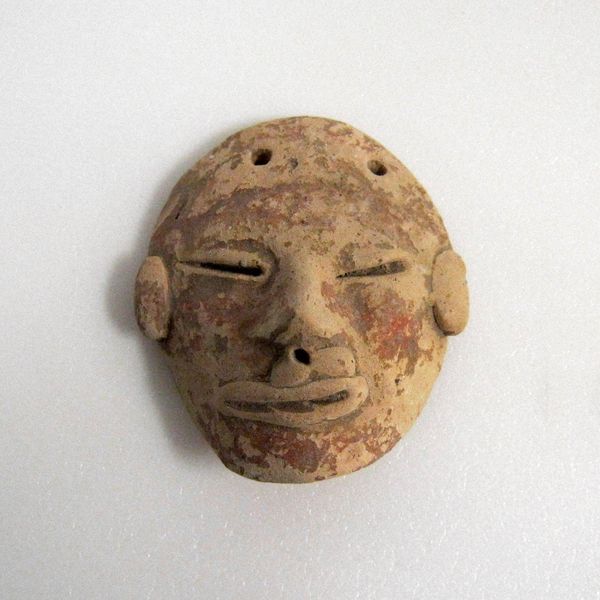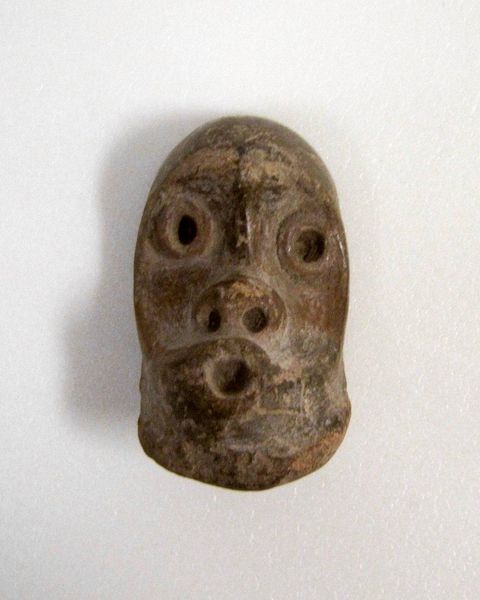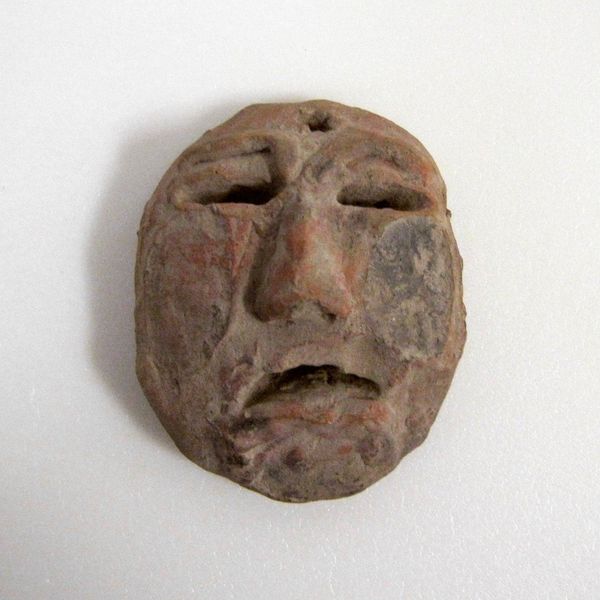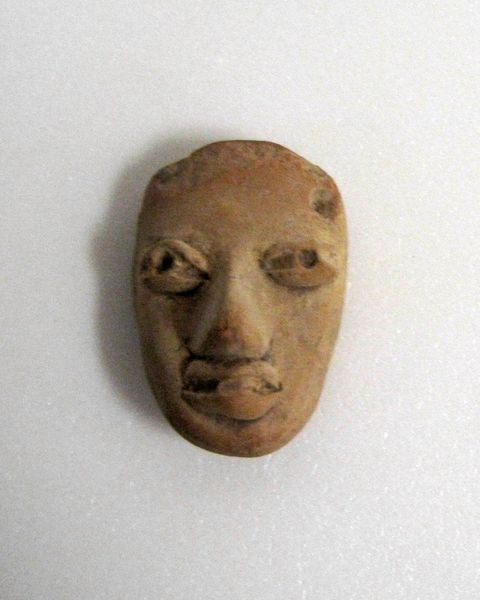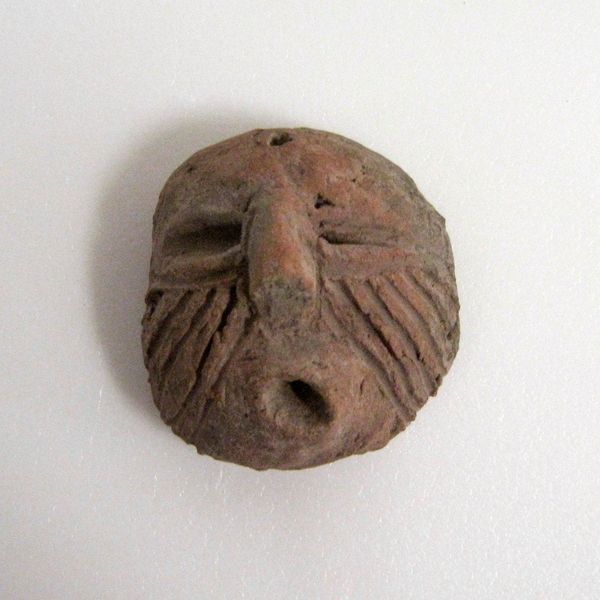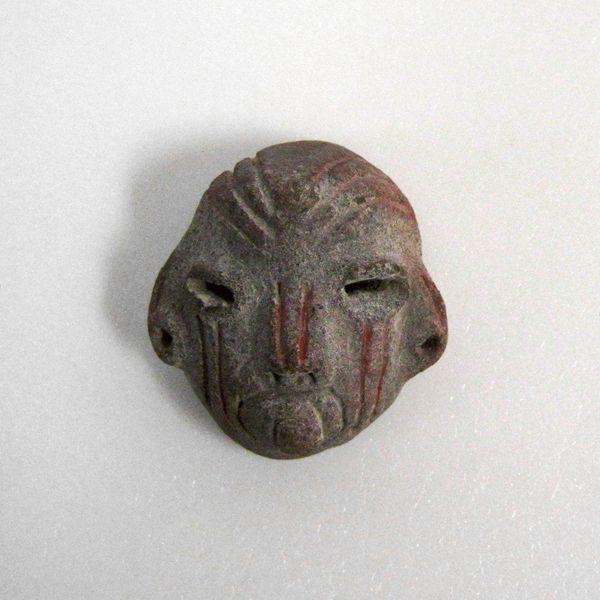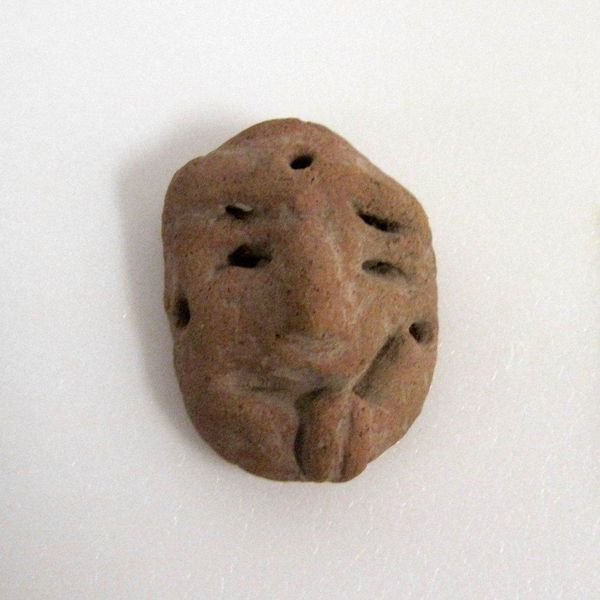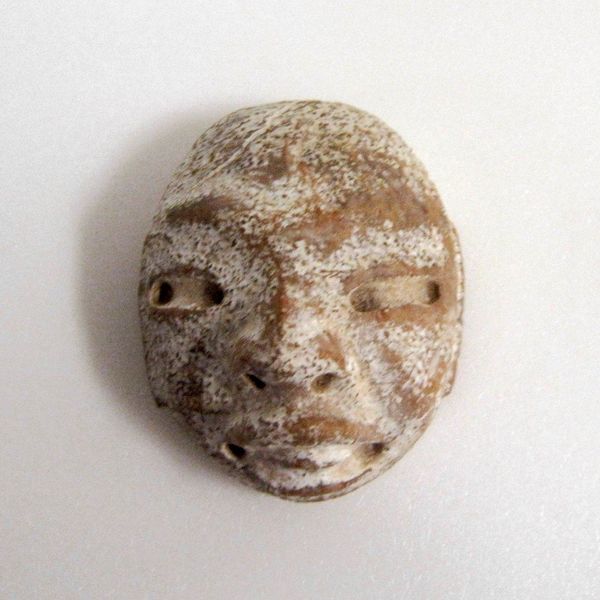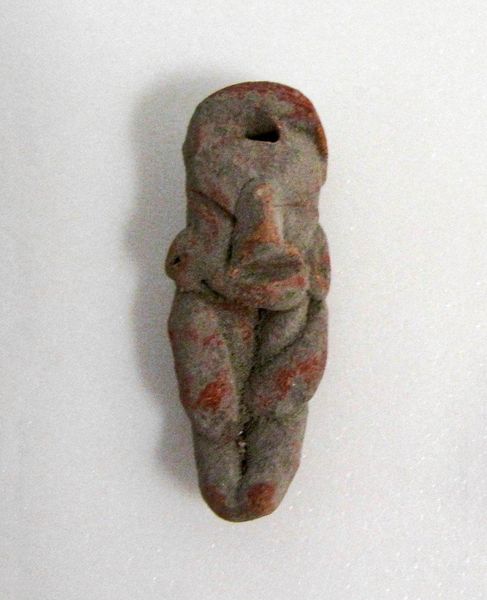
ceramic, earthenware, sculpture
#
sculpture
#
ceramic
#
earthenware
#
sculpture
#
indigenous-americas
Copyright: Public Domain
Editor: We’re looking at a miniature mask, estimated around 1500, attributed to the Tlatilco culture. It’s made of ceramic or earthenware. The expression seems so serene, almost dreamlike. What do you see in this piece? Curator: I see a powerful artifact connected to broader social structures and spiritual beliefs of the Tlatilco people. Think about what it meant to represent the human face at that time. It wasn't just about likeness; it was about conveying status, gender, or even a connection to the divine. Who do you think this mask might represent, and what role might it have played in their society? Editor: I’m not sure. The closed eyes could represent someone who has passed on, perhaps an ancestor? Could this be related to honoring the dead? Curator: Exactly! Archaeological evidence suggests the Tlatilco people had complex funerary rituals. These masks, often found in burial sites, may have served as conduits to the ancestral world, solidifying community identity through lineage. The act of creating it itself must be seen as a deeply political one – remember who had the power to create and control such important cultural objects. How does knowing this shift your understanding? Editor: It really contextualizes it. It’s not just a serene face; it’s a statement of cultural power, identity, and spirituality. Curator: Precisely. Art like this serves as a poignant reminder that we must investigate the cultural and historical context surrounding an artwork. Editor: That gives me so much to think about. Thanks for sharing your insights!
Comments
No comments
Be the first to comment and join the conversation on the ultimate creative platform.
